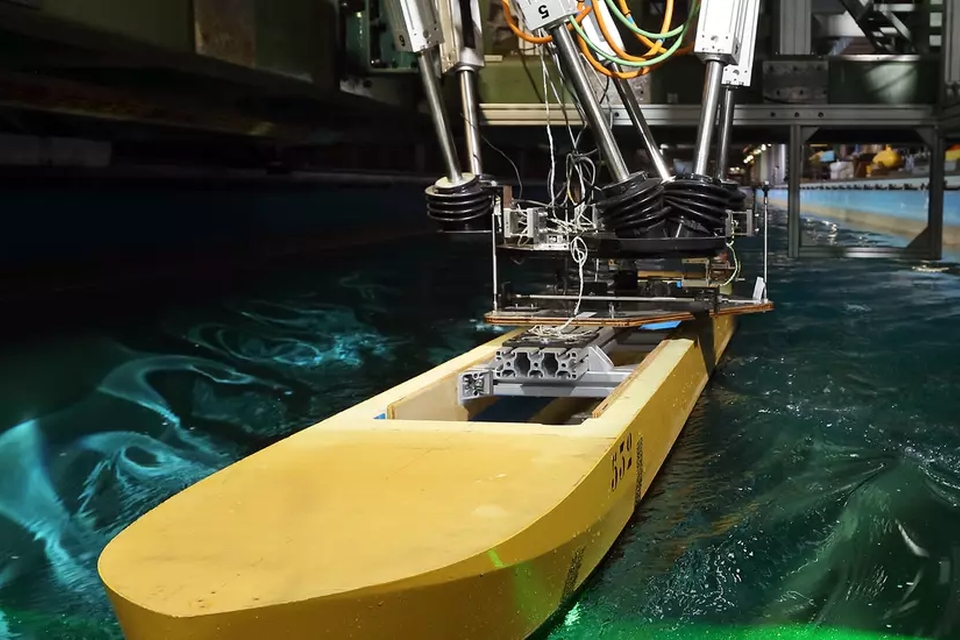The urgency of decarbonisation is evident, yet large uncertainty exists in finding the best transition method. One of the solutions might be the use of hybrid ships that use the energy of wind as an auxiliary means of propulsion. This will be the topic of a new Delft University of Technology (TU Delft) research programme.
The maritime sector faces a huge challenge to transition to a more sustainable future. Of the current global fleet, 98 per cent sails on fossil fuels, making the shipping industry accountable for three per cent of the global greenhouse gas emission.
Also read: NWO grant for TU Delft project using ammonia as fuel for ships
High-performing WASP
The Wind Assisted Ship Propulsion Research Programme is an interfaculty collaboration between the TU Delft departments Maritime & Transport Technology (3mE) and Aerospace Engineering (AE) to facilitate the development of high-performing Wind Assisted Ship Propulsion (WASP).
The research platform stimulates and facilitates this interfaculty project by combining the expertise of six research groups across two faculties, covering nearly all disciplines of modern auxiliary wind propulsion of commercial shipping. The programme will also focus on wider sustainability and socio-economic impacts. The aim is to reduce fuel consumption by thirty per cent.
‘In this research programme, we’re actually going back to the classic notion of a sail,’ says Albert Rijkens, coordinator of the project. In other words, the wind is not used to generate energy, but to propel the ship directly. ‘Instead of sails, we now use rotating steel rotors that exert a propulsive force on the ship by means of an aerodynamic effect.’ Of course, wind on its own is not enough to propel a large ship, that’s why the projects looks at wind-assisted propulsion. This saves fuel and, more importantly, reduces C02 emissions.
Also read: TU Delft launches Floating Renewables Lab to boost floating offshore wind
Aligning vessel and sail
According to Rijkens, there are already around thirty vessels using wind-assisted propulsion worldwide. ‘It’s an emerging market. For a long time, vessels were exempt from emission regulations. Until the beginning of this year. So there’s a need for technology that makes shipping more sustainable.’ The vessels on the market today are essentially prototypes. The auxiliary sails have been fitted to existing cargo ships.
‘Development is now a trial-and-error process. Our new research programme aims to make it more professional and align the auxiliary sails with the vessels. We want to explore what ship designs should look like in the future for a genuinely integrated overall solution.’ The fuel reduction of existing prototypes is now around ten per cent, but Rijkens believes it could eventually reach thirty per cent.
Also read: Neptune’s Canopée bags 2023 Ship of the Year Award
Towing tank and wind tunnel
The faculty AE is responsible for rotor performance experiments in the wind tunnel. At 3mE, new hull shapes and keel designs are tested in the towing tank to convert the force on the rotors into a propulsive force as efficiently as possible under water.
Rijkens: ‘The forces from the rotors cause the ship to drift and start to list. This change in position creates a complex flow of water around the hull. To measure this, small floating particles in the towing tank are illuminated with a powerful laser, making them visible to cameras in the measurement setup. These camera images can be used to accurately map the entire flow around the ship. This is then used to check the results of computer simulations.’
Also read: The winds of change: One zero-emission dilemma for shipping solved?
Axe bow fund
The EUR 4 million initiative is funded by Damen’s Axe Bow Fund. The Axe Bow allows a vessel to cut through waves resulting in less vertical movements and less high vertical accelerations.
Damen Shipyards has a licence to sell the Axe Bow. For each Axe Bow sold, the company from Gorinchem donates money to a Delft research fund with which the Marine and Transport Technology department can carry out follow-up research and can fi nance new PhD candidates.
For the WASP project, there is funding for up to twelve Phd researchers.
Picture by the TU Delft.
Also read: IQIP and TU Delft to reduce underwater noise of pile driving








